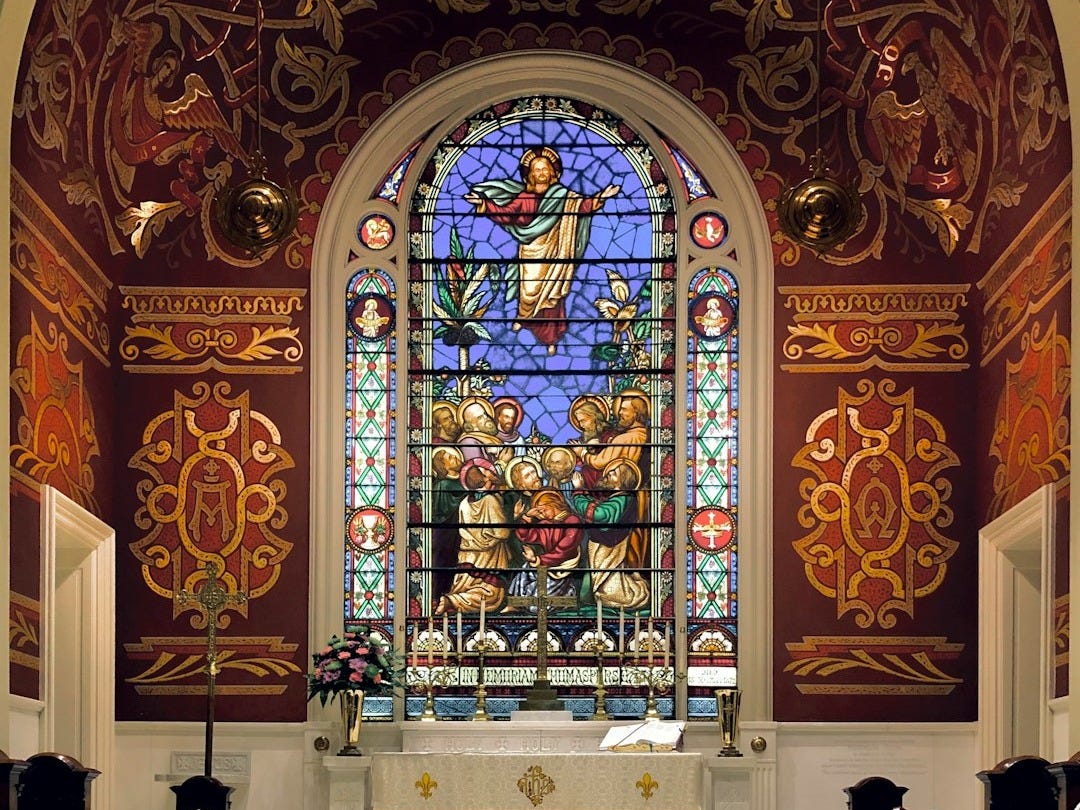Today, in my home archdiocese of Baltimore, we celebrate the Feast of the Ascension. I know, I know: It’s called Ascension Thursday, right? That’s what I learned growing up, at least. But what can you do? Jesus—fully divine but also fully human—undoubtedly arrived at the airport, all packed and ready to ascend, only to discover that his flight had been delayed and there was nothing available for three days.
(“Three days?” Jesus said. “You think you’re real funny, huh?” “I’m sorry, sir, I don’t catch your meaning.” “Three days…” Jesus said again, slowly, nodding at the airline agent. “The amount of days I spent in the tomb? Dark, stuffy, unable to move until God intervened?” “It’s good to hear you’re familiar with flying economy,” the agent replied. “That’ll be however much money you have in your wallet if you’d like to check a carry-on.”)
On the actual Thursday in question—namely, the Thursday of this past week—a very short excerpt from my new book, Finding Peace Here and Now: How Ignatian Spirituality Leads Us to Healing and Wholeness, appeared on the wonderful Jesuit Prayer App. In case you missed it, I’m sharing it below to aid in your prayer on this important feast day.
Ascension, Descension and a Call to Community

I once heard a Jesuit preach on the ascension. He reminded us that this image of Christ going up into heaven is rather incomplete. Christ, he said, also descends into all of creation; Christ is intimately present to us now. We are the Body of Christ. We are Christ’s hands, Christ’s feet, and so on. Rather than being solely limited to his bodily form, he can be incarnate in all things. “It is through and within the organic unity of the total Christ . . . that God’s will and his creative action finally come through to us,” writes Teilhard de Chardin. “Everywhere he draws us to him and brings us closer to himself, in a universal movement of convergence of spirit.”[i] The resurrection and ascension become extreme acts of return, of entering ever more deeply into our spiritual home, our own selves. As Jesus shows us, the goal isn’t about escaping a world riddled with violence and suffering; it’s about returning to it, entering more deeply into it and collaborating in the imaging of something more. (p 158)
Want to read more?




Lovely. This reminds a little of the part in Thomas Merton’s “The Seven Storey Mountain” when — and I’m paraphrasing poorly here — he’s rejected by several religious orders because they sense he is trying to escape the world. But to truly serve the Lord and be a contemplative, you have to enter into the world and engage with it even more deeply. It’s not an escape, it’s an engagement.